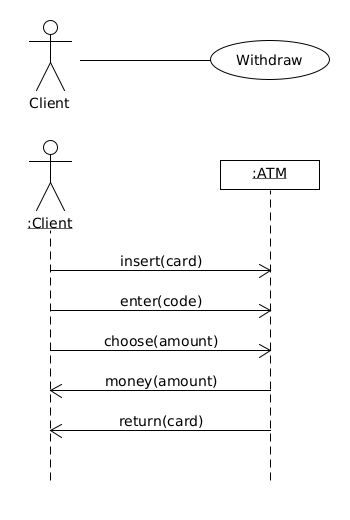UML&OCL Modeling Languages
Use cases: details
At this point, each use case is detailled by the way of "scenarii", i.e. sequence diagrams between an actor and the system.
In general, there is a nominal scenario ("everything is ok") followed by a lot of secondary scenarii ("everything goes wrong").

Use cases' diagram: details
Thus, scenarii descibe how to realize a functionality (with general then particular cases).
Each scenario is then documented : for instance, a "card" has a number, a name and a crc code, the "code" is obtained by querying the bank of the card, the "amount" must be a sum of 50, 20 and 10 euros, etc.
5 - 9thiry laurent ensisa uha alsace mulhouse france unified modeling modelisation language constraint object objet UML OCL
thiry laurent ensisa uha alsace mulhouse france unified modeling modelisation language constraint object objet UML OCL
thiry laurent ensisa uha alsace mulhouse france unified modeling modelisation language constraint object objet UML OCL
thiry laurent ensisa uha alsace mulhouse france unified modeling modelisation language constraint object objet UML OCL
thiry laurent ensisa uha alsace mulhouse france unified modeling modelisation language constraint object objet UML OCL
thiry laurent ensisa uha alsace mulhouse france unified modeling modelisation language constraint object objet UML OCL
thiry laurent ensisa uha alsace mulhouse france unified modeling modelisation language constraint object objet UML OCL
thiry laurent ensisa uha alsace mulhouse france unified modeling modelisation language constraint object objet UML OCL
thiry laurent ensisa uha alsace mulhouse france unified modeling modelisation language constraint object objet UML OCL
thiry laurent ensisa uha alsace mulhouse france unified modeling modelisation language constraint object objet UML OCL
thiry laurent ensisa uha alsace mulhouse france unified modeling modelisation language constraint object objet UML OCL

